‘Transatlantic’ Showrunner Anna Winger on Casting Gillian Jacobs, Taking Inspiration From 1940s Screwball Comedies to Tell “the Greatest Story Never Told”
- Oops!Something went wrong.Please try again later.
- Oops!Something went wrong.Please try again later.
- Oops!Something went wrong.Please try again later.
- Oops!Something went wrong.Please try again later.
- Oops!Something went wrong.Please try again later.
- Oops!Something went wrong.Please try again later.
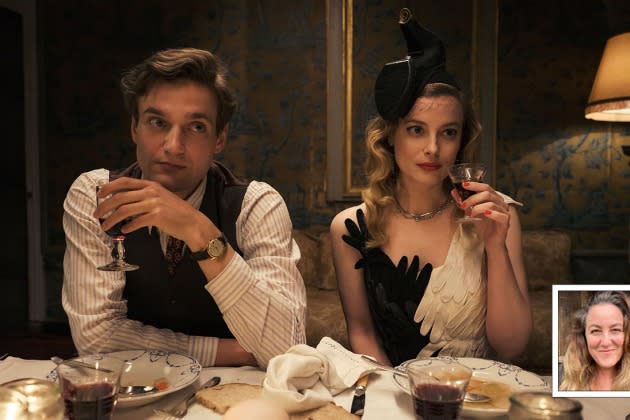
Anna Winger, an American writer, producer and showrunner who has spent more than 20 years, and her entire TV career, in Berlin, specializes in stories that combine a very specific European, usually German, history filtered through very American sensibilities.
Deutschland ’83, and its sequels Deutschland ’86 and Deutschland ’89, which aired on Amazon Prime stateside, told the story of the decline of East Germany and the fall of the Berlin Wall from the perspective of an East German spy, but told in the style of a slick Hollywood thriller.
More from The Hollywood Reporter
Similarly, her Emmy-winning Netflix limited series Unorthodox, the story of a woman who flees her life in an ultra-Orthodox community in Brooklyn to find liberation in modern-day Berlin — based on Deborah Feldman’s best-selling memoir — borrows heavily from genre conventions to package a spiritual character study in the guise of more mainstream entertainment.
That combination of European history and U.S. entertainment is also part of Transatlantic, Winger’s first show under an overall deal with Netflix that will see her Berlin-based outfit Airlift Productions produce international drama series for the global streamer.
The seven-part series, co-written by Daniel Hendler and inspired by Julie Orringer’s 2019 novel The Flight Portfolio, puts a fictional spin on the true story of the Emergency Rescue Committee. In 1940, former journalist Varian Fry (Cory Michael Smith) was sent to Marseilles in Germany-occupied France to help hundreds of Jewish and left-wing artists and intellectuals trying to escape Nazi terror. With support from the likes of U.S. heiress Mary Jayne Gold (Gillian Jacobs} whose money helped bankroll the operation, and former refugees, such as Albert Hirschman (Lucas Englander) and Lisa Fittko (Deleila Piasko), they helped more than 2,000 people out of France, among them some of Europe’s most acclaimed artists and thinkers, such as Hannah Arendt, Marc Chagall and Marcel Duchamp. For a time, the group set up a safe house in the Villa Air-Bel on the outskirts of Marseille, a location that became a cultural waystation for a who’s who of fleeing cultural luminaries.
Transatlantic takes its inspiration from its incredible true story, but Winger’s series, co-written with Daniel Hendler, filters the story through the style of 1940s romantic melodramas and screwball comedies — Casablanca is a particular touchstone — to provide something closer to classical Hollywood than a docu-drama.
Winger told THR‘s European bureau chief Scott Roxborough about her approach to telling the story, casting Community star Jacobs and parallels between the 1940s and the presence.
When did you first hear about the story of Varian Fry and the Emergency Rescue Committee?
Actually, my father told me this story, because he knew a couple of the people involved in it. He knew [anti-Nazi activist] Lisa Fittko in Chicago. They were part of the same organization that was protesting the Vietnam War in the ’60s. And he knew Albert Hirschman because they were both professors at Harvard in the ’70s. So when he and I were walking through Potsdamer Platz, maybe in 2012 or 2013, and he saw that there was a Varian Fry Street, he told me their story.
But probably the idea to make it into a TV show really started the year 2015, when so many refugees moved to Berlin. Weirdly, my office used to be in the Tempelhof Airport, and downstairs in the hangars was the first point of entry for the refugees who were coming, mostly from Syria. We were all volunteering down there, helping people find clothes and find supplies and everything they needed. I was there with my daughter, who was 12 or 13 at the time, and after the first day, she said: these are just people like us, except for people like us used to have to leave Berlin. And now these people are coming here seeking refuge. It was really moving to me that he she got that so quickly, that she understood the connection and this kind of circle of history.
And then, while I was making Unorthodox, Julie Orringer’s novel [The Flight Portfolio] came out. It felt like kismet. So I optioned the book. And Julie had done so much research. She’d spent years writing this novel and really thought about the psychology of Varian Fry.
The crazy part about this particular story is it’s the greatest story never told. Everybody who lived through it was a writer or an artist. So they all wrote memoirs and plays and fiction and stories and novels. There’s actually a lot of material about it once you start taking an interest. I read lots and lots. The biographies of everybody involved, whatever I could find. I just went down the rabbit hole.
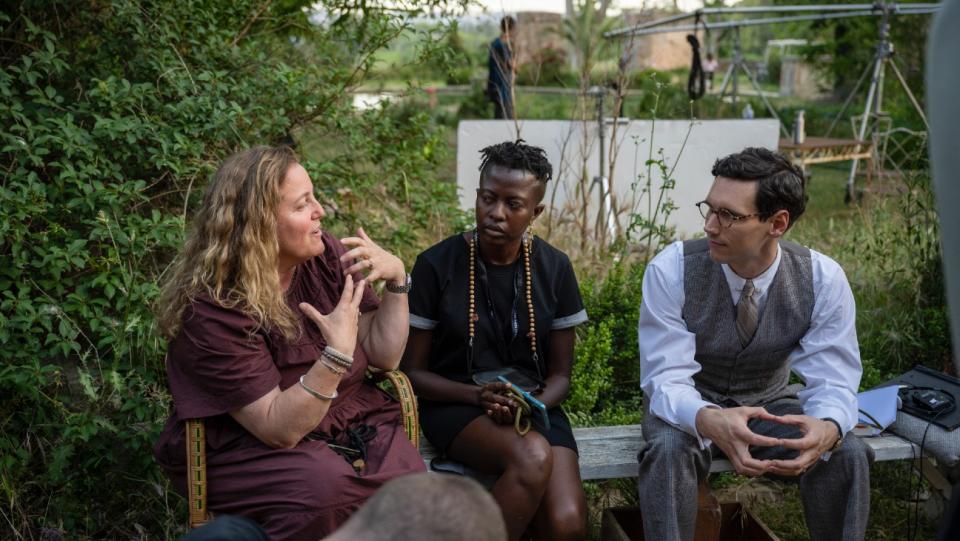
What particularly appealed to you about this story, what was your specific angle in?
One of the things I thought about a lot was about how so many people like me, artists and people in the entertainment industry, who had been exiled from Berlin, went to Hollywood because they needed work. And they were making movies, writing screenplays, working in crews, all these Berliners from the Berlin film world who had gone there as refugees. And suddenly they were working on films that, in real time, were dealing with World War II, the news from home, and the trauma and the tragedy, all the anxiety of what was happening in Germany. I thought it was so incredible how they were able to process it in real-time or channel it into humor and romance. In all these genre films, they were using all the tools of what we do to process their own trauma.
I’d read a bit about the making of Casablanca, which is one of my favorite movies, and so many of the people working on that film were actually recent German emigres. Just imagine them all sitting around at lunch. What were they talking about? It just must have been so intense.
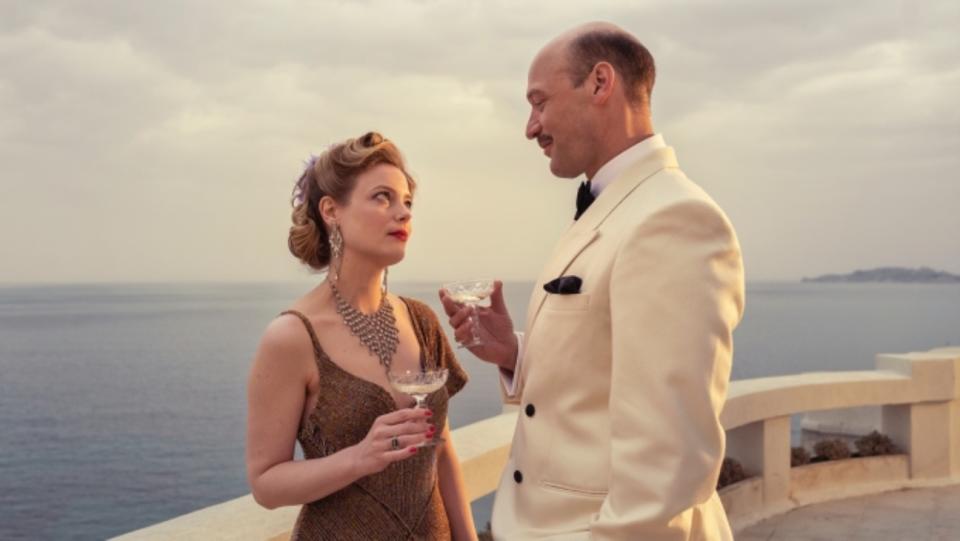
So, stylistically that was really inspiring: to make something like the movies people were watching at the time. My approach was inspired by that idea. By movies like Casablanca, To Be or Not to Be, The Great Dictator, these comedies, romances, melodramas that are about World War II in real time.
But if you’re asking what I identify with about the story, it’s that I’m an artist living in Berlin. Probably everyone thinks it was the American angle that attracted me to the story, but actually, it was more the intersection of all these different people. Marseilles was a crossroads that brought people together to do something that was kind of magical, and amazing. Ordinary people did something extraordinary because their lives crossed paths in this moment.
For me, the story is really about the ways in which friendship and romance, and even sex, create community, and remind us that we’re alive. That even in the darkness, these are the things that make us human beings. I was writing this during the COVID lockdown, and that aspect became crystal clear to me.
Did taking that approach make it easier to focus on aspects of the story that probably wouldn’t fit as easily into a traditional or docu-drama take on the history?
Well, you read everybody else’s work, you read all the history, and then you have to kind of leave it behind to write the fiction. Because we don’t know what people were really saying behind closed doors, we don’t know exactly who was sleeping with who. But one thing that was really helpful for me was to understand what Marseille was like at that time. The Emergency Rescue Committee was one resistance organization, but there were many, many other people doing all kinds of other rescue efforts. We have a single, short scene where we show the Mexican consulate, but you could make an entire movie about that guy, because the Mexican consulate gave 45,000 visas to people in Marseilles. That guy is an incredible hero. There are so many great stories in this same space, and we just are picking one slice. We’re even just choosing one slice of the Emergency Rescue Committee because there was actually a lot of people involved. And each of them deserve a movie in their own right, like there were so many great characters. There were people like Charles Fawcett, Miriam Davenport, Danny Bénédite. There were so many refugees we had to leave out: Heinrich Mann, Golo Mann, Alma Mahler. There are so many people in this history, and we picked a few to tell a very specific story.
But one thing that was liberating and that really interested me was to understand how in Marseilles at the time, you were seeing the beginnings of the entire French Resistance. This takes place at a moment when Britain is fighting the Nazis alone. The rest of Europe was basically fascist. Things were looking really bad. It was pretty scary. And, you know, the last free zone in Europe, other than Lisbon, was in the south of France.
Into this space came all kinds of people, including all the people who’ve been brought from the French colonies in Central Africa and North Africa, and Asia, had been brought over to fight the Nazis, when the French were fighting the Nazis. After Paris fell to the Nazis, these people were released from service, but they were still in the country. I was very interested in the fact that in the early days of the French Resistance, there were a lot of Africans who were part of that process, and also in the ways in which all these things connect. Because the French Resistance was also the beginning of the end of the colonial system. This moment brought people together, who would never have otherwise had the chance to talk with each other. That generated new ideas about freedom across the board.
In this story, you have all the refugees who are trying to get to America for political freedom. But meanwhile, you have these Americans, Mary Jayne Gold and Vivian Fry, who are finding personal freedom in wartime Europe. They are all running towards freedom and they find each other at this intersection.
One thing that struck me, watching the series, was how incredibly influential, these great European artists and thinkers were in shaping America. They really shaped 1940s and post-War American culture...
Their influence was enormous. This is a refugee-positive story. Explicitly. It’s not polemic, but it just is. I grew up in the result of this immigration. I grew up in the world of American academia, and I have worked my whole life in the world of American art. And those worlds were irrevocably impacted by the fact that these people came to America. They changed American thought, changed American art.
Can I go back to the decision to make the series a bit like a 1940s screwball comedy? Was that when you decided to cast Gillian Jacobs for the role of Mary Jayne Gold?
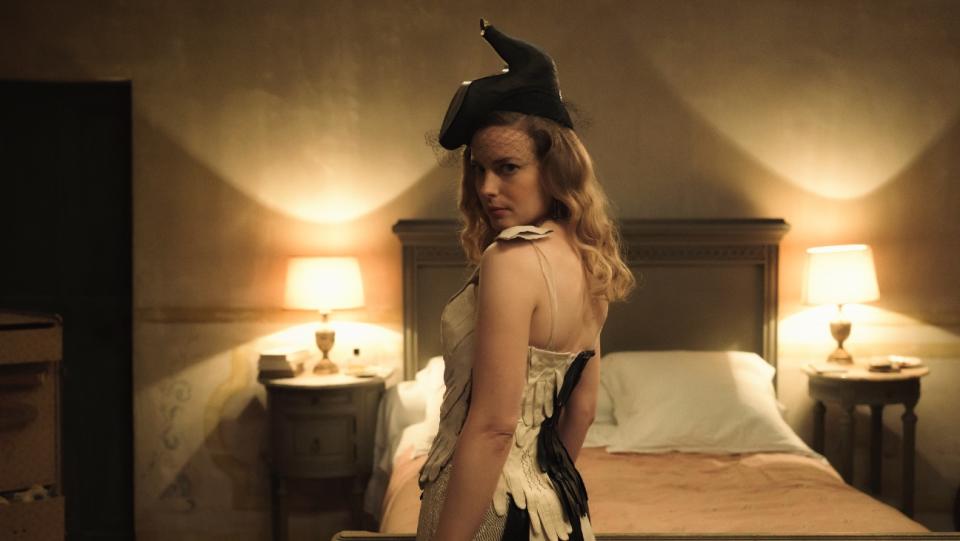
Well, the approach was the approach. We never thought of a different way to do it. I never wanted to make a different kind of World War II drama. But it was really hard to cast the Mary Jayne Gold role. We had trouble even thinking of someone who would work. We were really stumped. And then actually Isabel Teitler, who’s a producer and a writer on the show, she came up with Gillian’s name. We needed someone who had a kind of old-world sensibility, a kind of Katharine Hepburn glamor heroine who’s also really smart but has funny bones, so she can do those scenes, but is also a dramatic actress. Gillian was absolutely perfect. But it was really interesting in general with the casting on the show. It was so hard to find the right people, but then, for each of them, the casting seemed exactly right. Cory Michael Smith is so unbelievably great as Varian Fry. Lucas Englander, as amazing as Albert Hirschman. Mia Meyer, one of our directors, suggested him because they have the same agent. And I Zoomed with him and was totally overwhelmed. I don’t think I’d watched a single one of his previous performances before casting him. And he and Ralph Amoussou [who plays Paul Kandjo in Transatlantic] are really good friends already. So when we were in France shooting, they were so used to hanging out with each other anyway, they became the core of this community, with the Americans joined in, and [Swiss actress] Delilah [Piasko] and Amit Rahav [as Thomas Lovegrove], who’s Israeli. Everybody was living in Marseille. The whole experience of coming together to make the show replicated what the show was about.
Did you shoot everything on location in Marseille?
Everything in Marseille. The hotel in the film is the real hotel. It’s now an administrative office. We shot at the real internment camp. The prison is the real one where they kept the inmates. The wharf, the beaches, the port, it’s all the actual locations. The real Villa Air-Belle had been torn down, but we found another villa nearby. The south of France is full of these insane villas. The one we found hadn’t been touched since the ’40s. It was like it was waiting for us.
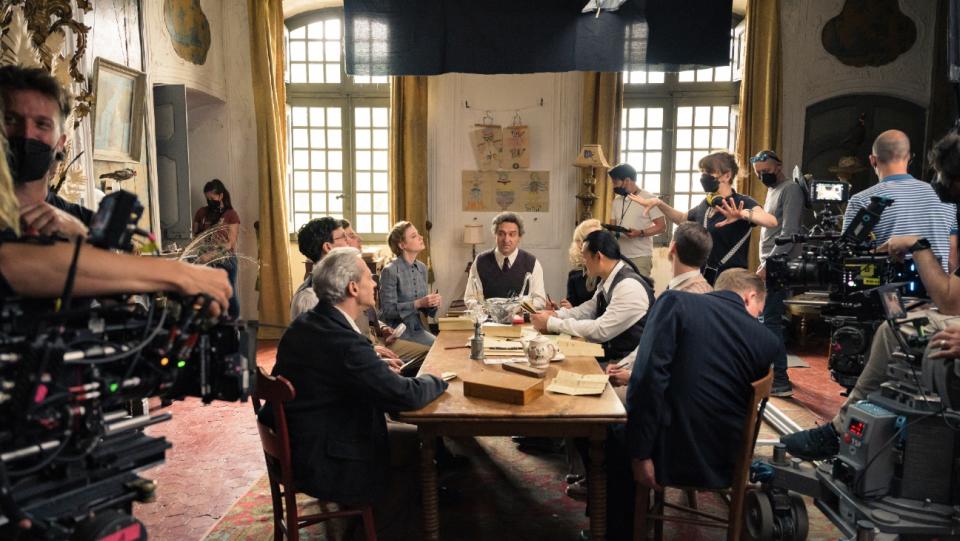
The war in Ukraine began shortly after you started production, making the refugee story terrifyingly topical…
Yes, this is the story of one refugee crisis that was inspired by another, from 2015, but we ended up shooting it during a third. It was totally unanticipated. It still feels uncanny that, three days after we started shooting, there was another war in Europe. We were filming Walter Benjamin [Moritz Bleibtreu] go over the Pyrenees while we were looking at our phones and seeing people lined up at the Polish border to Ukraine, trying to get out of Ukraine.
Do you see parallels between the events in the ’40s and the current situation, particularly how people in the U.S. and how the U.S. government, is reacting? In the series, you show how many, maybe even most, Americans don’t want to get involved in a war in Europe and are hostile to taking in refugees.
I think there are major differences, of course, with the situation now. I think the U.S. is quite engaged. I mean, Ukraine is a very different war. People having to leave their homes and escape – that’s similar, but the war is different. I think in the ’30s and ’40s there was a real resistance in the United States to getting into the war. But you have to remember: this was just barely one generation after World War I. So many Americans had lost their lives in World War I, and there just was no appetite to get into another European war.
I don’t think that’s on the table here. So it’s a different situation. But I think, we’ve always had this debate in our country about whether we should be open to the world, or whether we put America first. Whether we’re a country of immigrants or whether we’re “full” and have enough immigrants.
How optimistic are you about the future of that debate?
I’m an optimist. Actually, I’m a “possible-ist.” I’ve learned this word recently. The U.S. Ambassador to Germany told it to me because she personally knew Albert Hirschman. And she said that’s how he always described himself: as a possible-ist. I thought: “someone has finally described my religion!” I am a possible-ist. I’m playing a long game. I believe that things are going to get better.
Transatlantic premieres worldwide on Netflix on Friday, April 7.
The interview was edited for length and clarity.
Best of The Hollywood Reporter

